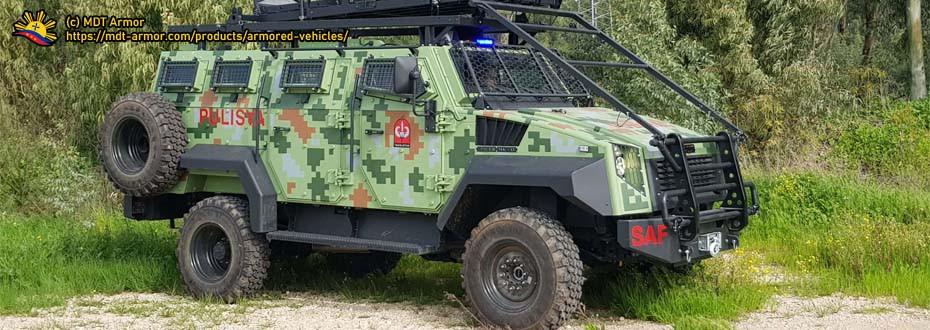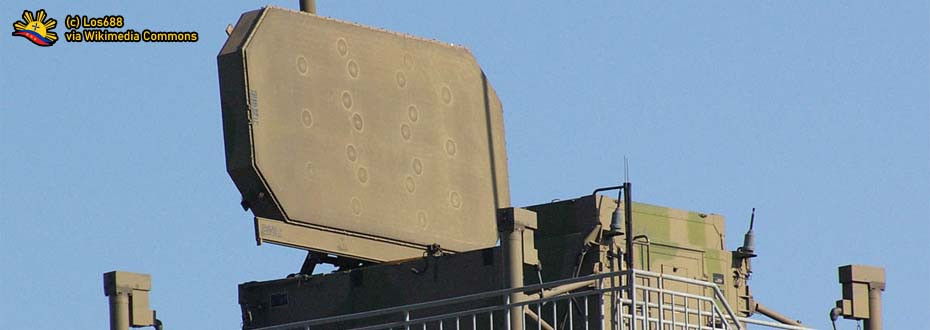.png) |
Rafael Advanced Systems Limited presents the Icebreaker anti-ship missile, a game-changing munition that may enhance the Super Tucano aircraft's capability.
A screen grab from a Rafael Advanced Systems video presentation. |
Upon the completion of the delivery of at least six (6) A-29 Super Tucano close air support aircraft to the Philippine Air Force, the air service branch of the Armed Forces of the Philippines will end up having at least twelve (12) units or a single squadron of close air support aircraft that counts as useful against counterinsurgency threats and future territorial-based threats against the country. Since the delivery of the first six (6) aircraft, the Super Tucano itself came with an introductory upgrade to its capabilities.
Case in point, the Brazilian Armed Forces
started an upgrade program that will improve the capability of its Super Tucano close air support aircraft, which includes new electro-optical sensors, reinforced armor, and self protection threats against missile threats.
Their upgrades came on top of their integrated cockpit with
Wide-Angle Display or WAD interface that comes similarly to the Brazilian JAS-39 Gripen E/F fighter aircraft, along with advanced networking integration with the Swedish-developed fighter jet.
One significant thing to check on is the newly developed multi-domain missile solution provided by the Israeli defense company Rafael, which is the
‘IceBreaker’ precision-guided anti-ship missile munition. Suitable for light attack aircraft such as the Super Tucano close air support aircraft, the IceBreaker anti-ship missile will enable the Brazilian produced aircraft to have territorial defense capabilities, especially now that the Armed Forces of the Philippines is shifting into this domain of primary concern.
The missile munition developed and unveiled by Rafael will further expand the firepower capabilities of the Super Tucano close air support aircraft of the Philippine Air Force, particularly that the air service branch now is on its way to secure at least six (6) additional aircraft to form a squadron of this platform in its inventory.
This enables the Philippine Air Force to use the aircraft for both close air support and territorial defense operations, with the latter augmenting coastal defense systems and missile systems onboard naval vessels.
As these upgrades for the Super Tucano already taking up accordingly by various entities like the Brazilian Air Force, this path might be worthy for the Philippine Air Force to consider, especially that it will maximize further the utility of its close air support aircraft to conduct and undertake mission objectives that this aircraft will come as a better option to provide on. Also, this capability might surpass the ones that the air service branch decommissioned recently out of service.
15TH STRIKE WING’S RECENTLY DECOMMISSIONED ASSETS
 |
On 28 December 2024, the Philippine Air Force decommissioned both the OV-10 Bronco and the AH-1S Cobra Attack Helicopter, serving the organization for one last time.
Image Source. |
In the final weeks of December 2024, the
Philippine Air Force opted to decommission both of its OV-10 Bronco close air support aircraft and the remaining donated AH-1S Cobra Attack Helicopter from Jordan, citing sustainability costs and reduced availability of spare parts to maintain and operate both platforms.
This put both platform’s service with the Armed Forces of the Philippines to a close, enabling newer aircraft such as the
T-129 ‘Atak’ Attack Helicopters from Turkey and Super Tucanos to take over.
It put an end to the decades worth of service for the several decommissioned OV-10 Bronco close air support aircraft
that have started in the 1990s when it replaced the
North American T-28 Trojan aircraft that came before it, and the purchase of the additional A-29 Super Tucano close air support aircraft from Brazil simply serve as the continuation of developing change on such aircraft in the Philippine Air Force’s inventory. This comes as the modernization efforts enable it to purchase newer military hardware.
The decommissioning ceremony also put an end to the
AH-1S Cobra Attack Helicopters of the Philippine Air Force, of which it only served at least five (5) years in service within this military branch of the Armed Forces of the Philippines. Donated by Jordan, it provided a transitory platform for the pilots to get experience in operating a dedicated attack helicopter, until the
first batch delivery of the T-129 ‘Atak’ Attack Helicopters from Turkey
took place in the year 2022.
It is worth to note the track record that the decommissioned aircraft had when it went in service with the Philippine Air Force, particularly with the OV-10 Bronco and its multiple sorties against both the
communist and Moro separatist threats scattered across the country.
One notable example is with
its performance in the 2017 Marawi Siege, of which its pilot’s precision strike capability proves to be an effective strategy to eliminate the threat posed by the occupying Islamic radicals in the city.
Overall, this signifies the change reflected by an ongoing modernization process that affects all branches of the Armed Forces of the Philippines, which includes the Philippine Air Force.
It points to a constant improvement of capabilities and the purchase of newer military aircraft comes with an ease of maintenance for the personnel that are taking care of the country’s military platforms, as its current production provide access to spare parts and operability that ensure its prolonged service within the military.
ENDING NOTE
 |
The Philippine Air Force sees the Super Tucano CAS as the future of a close air support capability platform.
From David Branco Filho, Flickr. |
The Philippine Air Force, upon the completion of at least six (6) more A-29 Super Tucano Close Air Support Aircraft under the acquisition project that calls for more aircraft of such type, the service branch will probably end up having at least a squadron of the Brazilian-made platform that will replace the recently decommissioned aircraft such as the OV-10 Bronco aircraft and the AH-1S Cobra Attack Helicopters. This means that there will not be any reduction in the 15th Strike Wing’s overall capabilities.
In the acquisition project for additional Super Tucano aircraft, one thing to point out is the fast pace of the entire process, something that the defense community of the Philippines look forward to in other acquisition projects of the Armed Forces of the Philippines, especially the ones earmarked under the
2025 General Appropriations Act.
The fast pace of the procurement process is likely getting faster upon the full implementation of the
New Government Procurement Act or the Republic Act 12009 by government agencies including the Armed Forces of the Philippines, especially once the newly crafted Implementing Rules and Regulations or IRR sets into place by the GPBB or the Government Procurement Policy Board. This enables the Philippine military to fast-track its military projects, significantly improving its badly needed capabilities in a short time.
After serving beyond three (3) decades of serving the Philippine Air Force, several of the iconic OV-10 Bronco close air support aircraft will now lay into rest, ending an era that it was the mainstay close air support aircraft of the service branch’s 15th Strike Wing.
The time has now come that a newer aircraft will come in, and the fleet of
A-29 Super Tucano close air support aircraft now becomes the spiritual successor of the OV-10 Bronco, in a manner that the latter replaced the T-28 Trojan aircraft in the 1990s.
In this final note, the ongoing projects signify an ongoing change that is taking place within the Philippine Air Force and the Armed Forces of the Philippines at-large, improving its capability by securing newly produced aircraft to meet its end requirements, while relieving itself with the ever-increasing maintenance cost of keeping the older platforms in service.
And with this change comes a promising future that the Philippine defense achieves its desirable posture, ensuring its national sovereignty and integrity.





















.jpg)





.png)




%20Launch%20-%20PDA.jpg)

